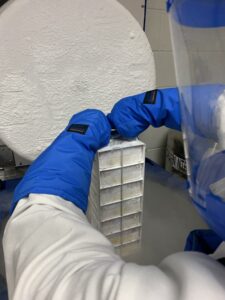Importance of Cryopreservation of Mammalian Cell Lines
Cryopreservation of mammalian cell lines is a cornerstone technology in the fields of biological research and biotechnology. It plays a vital role in medicine, agriculture, and environmental science. This technique involves cooling cell lines to sub-zero temperatures. This halts their metabolic processes and preserves their genetic material, structure, and functionality for future use. The benefits of cryopreservation span various domains, from pharmaceutical development to regenerative medicine, and even biodiversity conservation. Let’s delve into the significance of this technology and its broad impact.
Boosting Medical Research and Therapeutics
In the realm of medical research, cryopreservation is indispensable. It allows for the preservation of a diverse array of cell lines. Researchers can then study diseases at the cellular level, test potential drugs, and develop gene therapies. For example, biobanks store cancer cell lines. These have been key in identifying genes that contribute to cancer, leading to the creation of targeted therapies. Similarly, stem cells preserved through cryopreservation are fundamental to regenerative medicine. They hold the promise of replacing damaged tissues or organs, offering hope for cures to degenerative diseases.
Strengthening Biobanking and Genetic Diversity
Biobanks rely on cryopreservation to store and manage biological samples. These repositories ensure a continuous supply of genetic material for research. They support studies on genetic diseases, aid in the development of personalized medicine, and help conserve endangered species. By maintaining genetic diversity, cryopreservation aids in understanding evolutionary biology. It also helps species adapt to environmental changes, safeguarding future biodiversity.
Enhancing Vaccine and Antibody Production
Cryopreservation is also crucial in producing vaccines and monoclonal antibodies. It ensures a consistent and reliable source of biological material for manufacturing these essential healthcare products. This capability is vital for responding swiftly to emerging infectious diseases. It also ensures the availability of monoclonal antibodies for treating various conditions, such as autoimmune diseases and cancers.
Encouraging Global Collaboration and Standardization
Moreover, cryopreservation facilitates the sharing of cell lines across the globe. This boosts collaboration and speeds up scientific discovery. Using authenticated cell lines ensures research findings can be reproduced. This reproducibility is fundamental to scientific integrity. Such international sharing supports method standardization. It enhances the comparability of results across studies, building a coherent body of knowledge.
Addressing Challenges and Looking Ahead
Despite its advantages, cryopreservation faces challenges. These include genetic drift, contamination risks, the need for specialized equipment, and the costs of cryogenic storage. Overcoming these issues through improved techniques and standards is vital for leveraging cryopreservation’s full potential.
Future innovations could further enhance cryopreservation. Advances in cryoprotectants, automated storage systems, and cell line authentication methods are promising. Moreover, combining cryopreservation with technologies like CRISPR-Cas9 gene editing opens new possibilities in genetic engineering and conservation.
Conclusion
Cryopreservation of mammalian cell lines is a foundational technology with wide-reaching implications. It supports advancements across multiple scientific fields. By enabling the preservation of genetic material, it underpins medical research, biobanking, vaccine production, and global scientific efforts. Innovations and addressing challenges will be crucial for maximizing its benefits. This promises not only to aid current research but also to offer new opportunities for future generations. Cell Culture Company routinely generates cell banks for our customers. Contact us today to discuss your needs.

